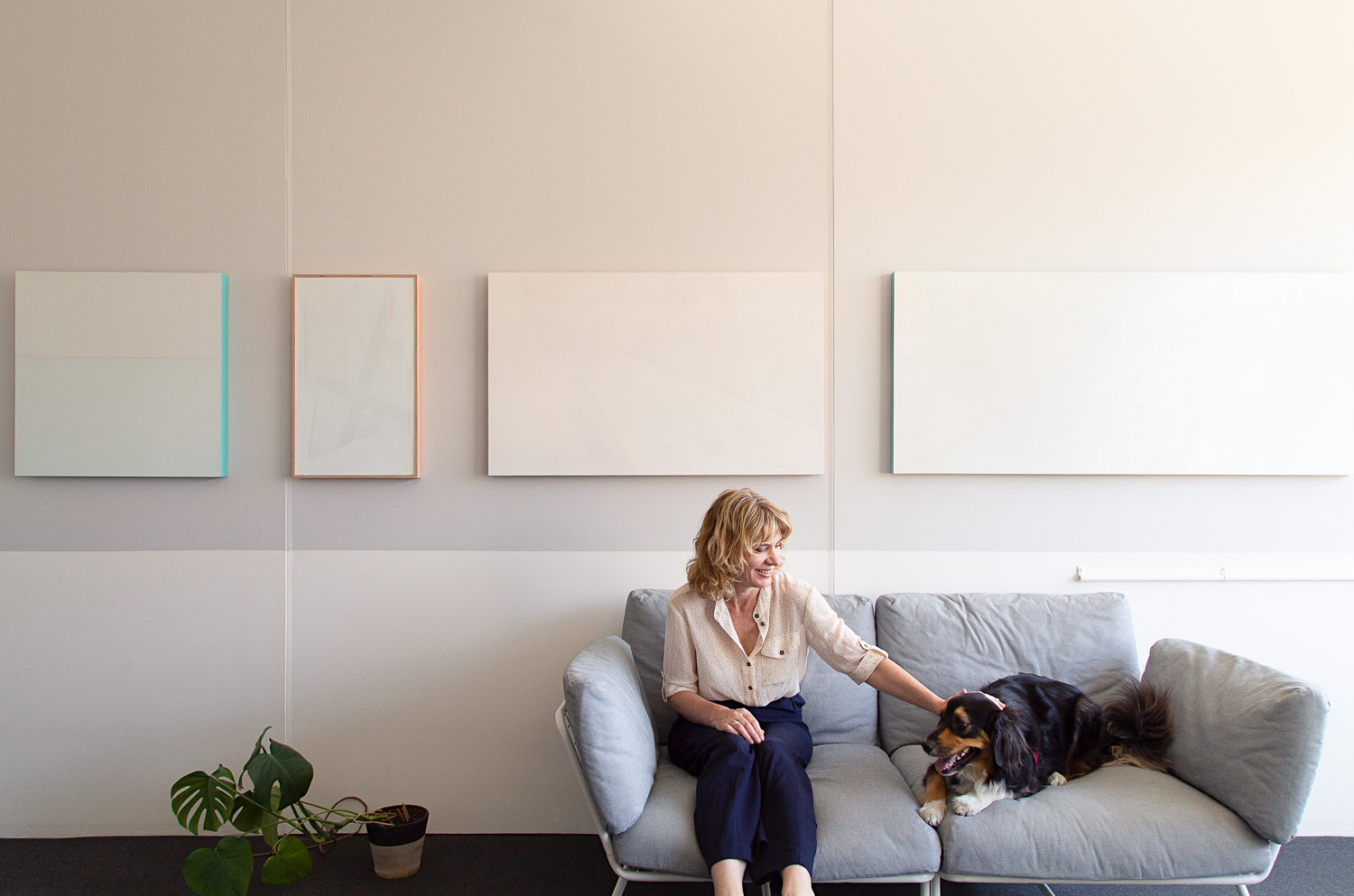Melbourne artist Lee Mullen captured at Claire Scorpo studio in Fitzroy where her artworks hang.
Photography by Emma Byrnes.
When I am working with creatives the style of photography tends to sit within one of the following frameworks:
BEHIND-THE-SCENES of everyday practice - showing the process of the artist.
A good example of this is a series I photographed for Spacecraft.DOCUMENTATION of a design/ art event or an art installation.
See a blog post I have written about documentation here.Work hanging in a GALLERY ENVIRONMENT.
An example of this type of work can be found here.PORTRAIT - a picture of the artist/creative in their studio.
See an example here.
Sometimes I will know the artist and other times they come to me through a recommendation.
Either way I will often take the following steps via email or over a phone call:
WHAT IS THEIR ONLINE/SOCIAL MEDIA PRESENCE?
I will usually look up the artist and see how they have chosen to represent themselves already. Some people are fully engaged in a web presence/social media conversation and others are not. Even their absence from the online world can reveal a lot to me.PERSONAL VISION
I will also ascertain whether or not they have a personal vision for the photographs. From my personal experience I find that most creatives who come my way understand the creative process and are therefore happy to give in to a more intuitive journey - not needing to fully control the outcome. But there are some personalities for whom control is crucial and it is important to establish this beforehand to avoid a clash of intentions. I like working with both types of clients and am not afraid of a more prescriptive approach. Whatever the case may be if the creative has certain requirements (ie needs a portrait taken for a certain publication; needs the orientation of the images to be in landscape format for a website, needs to have a series of images or just one hero image) this all needs to be planned/discussed beforehand.LOCATION /LIGHTING INFORMATION
I always talk about their location/studio beforehand so I can think about the light and the parameters beforehand. Sometimes I will visit a location in advance to get a feel for the kinds of shots I will aim for and notice details that might help on the day, such as vantage points, window placement. Or I might just look up the studio/workplace on Google and note where north is in relation to the location and also open shade possibilities in case we need it.NATURAL LIGHT
My preferred style of photography is to shoot in natural light. I have mastered the art of manipulating my camera on manual at all times so that I can avoid setting up added lighting or distract my subjects with flashes. I feel if I can remain unnoticed and shoot pictures unobtrusively, I’ll capture more natural scenes. Sometimes if the light is low this will lend the images a grainy texture and if I know that this may be one of the possible outcomes I will flag it to the client so we can troubleshoot if need be.A SERIES OF IMAGES
When talking about visual storytelling through photographs it more often that not refers to a series of images that work together to reveal a narrative. In a way you could look at each image as being a chapter in the story, unfolding towards the climax. A series of images emphasises several ideas, whereas a single image usually emphasises just one idea. One image may be able to say everything you are trying to communicate but most often you will also need a series including close-up details of tools, attire and environment to flesh out the tale.
Portraits don’t always need to be traditional head and shoulders and I usually find that the most successful portraits of creatives are of the artist/creative lost in their work. However some people suit a more staged approach. Unless this has been outlined beforehand I tend to make this judgement on the day.STRONG EDITING SKILLS
It is also worth noting that capturing a good image takes time. It is more than likely after a long photoshoot we will only bear a handful of images. That is because if you are trying to tell a strong story you need to show strong editing skills and only use the strongest images. However If I am documenting an event there will often be many more images as the aim is to tell the story of the event from as many angles as possible.HOW MUCH TIME DO WE HAVE?
I always ascertain before the shoot how much time a subject has and if on the day I sense they are in a hurry I will make a series of photographs within the time constraints but if there is no rush I love to slow down, observe and enjoy watching the scene unfold to be able to tune into the nuances.
Click here if you would like to read more blog posts in the INTIMATE OBSERVATIONS series.
And get in touch if you would like to book in a photography session.


